This guide has not yet been updated for the current season. Please keep this in mind while reading. You can see the most recently updated guides on the browse guides page
 Thank You!
Thank You!
Your votes and comments encourage our guide authors to continue
creating helpful guides for the League of Legends community.
Recommended Items
Runes: Personal Standard (See Notes)



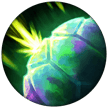
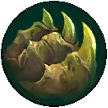



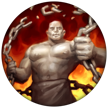



+8 Ability Haste
+6 Armor
+65 Base Health
Spells:


Flash

Ignite
Items
Threats & Synergies
 Threats
Threats
 Synergies
Synergies
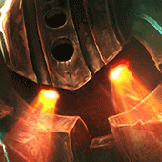 Show All
Show All
 Extreme Threats
Extreme Threats

 Ideal Synergies
Ideal Synergies

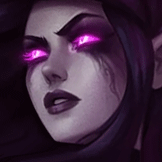
Morgana
Morgana is the single most common lane opponent you will face as a counter to Nautilus. However, as you play more Nautilus, you have many more options to play around Morgana than she does to play around you. There will be an in-depth section of the guide explaining these options.

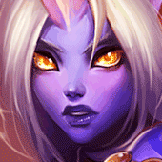
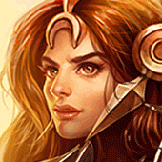
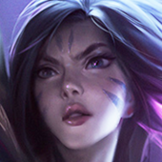
Kai'Sa
Early, Nautilus + Kai'Sa have insane kill potential, as Nautilus can charge up two stacks of Kai'Sa's passive thanks to his Q + passive. As a result, this can lead to a lot of early cheesy kills. Later on, adding in his Ult will add more stacks, and Kai'Sa can ult to gap close on a target you catch.

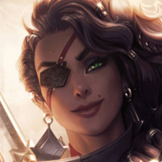
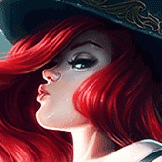
 Synergies
Synergies

Kai'Sa
Early, Nautilus + Kai'Sa have insane kill potential, as Nautilus can charge up two stacks of Kai'Sa's passive thanks to his Q + passive. As a result, this can lead to a lot of early cheesy kills. Later on, adding in his Ult will add more stacks, and Kai'Sa can ult to gap close on a target you catch.



Champion Build Guide
I started League of Legends back in Season 2, and I've been a support main for just as long. While I started with enchanter supports, I got heavily into engage supports and started spamming
Strengths:
+Easy to play, Fun to master
+Heavy Crowd Control
+Play Maker
+Can single-handedly decide a teamfight
+Great for single picks or group AOE
+Decent damage for a tanky support
+Stays relevant late-game
Weaknesses:
-Squishy if caught and
-Few options to exit fights (this gets easier with mastery)
-Relies on solid decision making skills
The point is, every second that passes by in each game means more variables are getting added to the game, it's becoming more complex, and that's how you end up with "Coinflip" games. In general, and especially as
First off, in basically every game, INVADE. It doesn't matter if the enemy team on paper is much better level 1, or if your invade is weak from the rest of your teammates, or even if you only have 3 people for the invade because some players weren't paying attention or were AFK. In my experience, most teams are not playing the game as they should in watching for invades, let alone is there enough coordination around stacking in a bush in low Elo.
When the game starts, type "Invade" or "Inv" in chat, buy items quick, and ping two times on the spot where you want to do the invade from (I.E. ping bot lane if invading through bot, or mid lane if invading through mid). Don't bother invading from top.
Make sure you're leading the invade. You need to be in front so you're ready to engage when the opportunity comes up. When you go for an invade, there are a few possible outcomes. I'm going to outline each outcome and what to do from there.
If the enemy starts reacting, immediately assess if you can land a
Additionally, consider if your
ADVANCED STRATEGY
If the enemy team spots you and the engage does not look good, walk away with your team as if you're retreating; then go and "loop around" (if you invaded from bot lane, go around and come through mid, and vice versa). Most enemies are not ready for this strategy.
Congrats, a free kill for you and your team
If this happens, then there are one of three possibilities.
Most times, simply wait at the enemy buff and either have your
Now, after leashing (if you need to leash), next assess whether you can level 1 cheese the enemy (done by waiting in the enemy tri-bush if you're on red team and waiting in the river brush if you're on blue team).
Once you've done all of this, you're ready to continue the pain train.
Gold and below: Go for the Level Two cheese. There's a reason this strategy has been around forever, and it's because in lower Elo most players don't truly respect the Level Two power spike. If you make it in time to lane to be around for all of the experience, you'll hit this after the entire first wave + the first three melee minions from the second wave. There are plenty of wave management guides out there, so the quick note is, make sure you have an advantage on clearing the wave (you want to hit Level 2 before them), but don't push too fast because you need enough room in the lane to engage and kill the enemy laners.
Platinum, but can benefit other Elo's: When in Plat, especially higher up in Plat, most enemies will be aware that you're looking to Level Two cheese them, and as such will start backing off if they fail to contest your push. Instead, I would recommend trying to pull off a cheater's recall if possible.
Cheater's recall: There are plenty of guides on this as well, but essentially you set up your wave so that you slow push waves one and two, then crash your third wave and quickly recall. You and your ADC get to buy a cheap item early and return to lane fully refreshed without missing much CS.
Those are some basic strategies for the beginning of lane phase, but what do you do after those strategies? Well, this question highly depends on what position your wave is in.
Neutral (Wave is even, minions are in the middle of the lane)
When the wave is even, you need to be constantly looking for opportunities to engage. There's a lot to be said about how to engage, which is why later in this guide there is a section called "The Art of Engaging" where I will outline everything you could ever want to know about fighting.
Pushing away from you
If the wave is pushing away from you, you either need to be planning something off of a slow push (such as a back, dive, roam, etc), or ensuring the wave crashes under the enemy tower entirely by pushing it with your ADC super fast. If the wave does not crash properly, assess whether the enemy laners are pushing back or attempting to freeze the wave. If they attempt to freeze, you ABSOLUTELY MUST go and make a play around the map elsewhere, at the very least make yourself present around the map so the enemy bot lane feels like they have to push the wave to punish your roam.
Pushing towards you
If the wave is building up, sit back and wait until you can clean up the wave on your side first. You want minion advantage when taking fights if possible.
VS Ranged Supports
When facing against ranged supports, you need to be mindful of how far up you can stand in lane. Only approach minions when necessary, such as when securing one of your
Laning Positioning
You should be doing one of three things in lane:
1. Stay parallel to your ADC (you both are equally far from the enemy laners)
2. Use bushes to conceal yourself, exert pressure, and can be used to zone enemies if you're able to freeze the wave on your side.
3. Stack on top of your ADC (if you're in a VS ranged matchup and they have bushes warded
1. Vision Control
2. Picks
3. Objectives
They are listed in this order because this is the order they must come in. You must first secure vision (which I'll outline in a separate "Vision" chapter), then look to make picks, and finally look to secure objectives off of those picks.
Late game will be much the same, though in the late game there may be the need to emphasize peeling for your carries instead of looking for the engage. You need to assess the number of Assassins/Burst Mages/Divers on the enemy team, your carry's carry potential, and the number of engage champions you have on your team. If you have no engage options on anyone else but yourself BUT ALSO need to peel, wait for the enemy team to engage and be ready to protect your team from it.
THE GOLDEN COMBO
 Depth Charge ->
Depth Charge ->  Dredge Line -> AA ->
Dredge Line -> AA ->  Riptide -> AA ->
Riptide -> AA ->  Titan's Wrath
Titan's Wrath
Start with casting your
If you do not have
Now that you know the golden combo, let's talk about the variants.
 Dredge Line ->
Dredge Line ->  Depth Charge -> AA ->
Depth Charge -> AA ->  Riptide -> AA ->
Riptide -> AA ->  Titan's Wrath
Titan's Wrath
This combo is the same as the golden combo, except instead of casting
 Depth Charge ->
Depth Charge ->  Dredge Line -> AA ->
Dredge Line -> AA ->  Titan's Wrath ->
Titan's Wrath ->  Riptide -> AA
Riptide -> AA
This version of the combo is designed to put all of your burst up front. While less damage overall, it's good when looking to very quickly burst a priority target. You can also opt to cast
Finally, I wrote up an entire guide on just about everything you could want to know about trying to land your
Let's break it down:
LEVEL 1 Warding
Before you even load in to game, you should start considering how the game could look on paper as a baseline. Take a look at each team comp, compare each lane, and determine very roughly how the matchup should go. For example, noting that top lane is
Once you've done that for each lane, you should have some type of rough narrative indicating what each lane's expected outcome is (I.E. Top lane is Volatile, Mid lane your mid laner will be permanently pushing the minions under the enemy tower, and your lane is all in vs all in). Now, next look at the
Once you have this baseline, there is an incredibly important decision you need to make from the very start of the game, which is: What am I going to do with my first ward?
The answer to this comes down to a very few key pieces of information, which is why we start by establishing a baseline for how the game can go. First, decide if you will need your ward in lane.
For instance, if you're playing against an enemy support that provides lots of pressure via bushes (think
Another scenario is that you will absolutely need your ward to watch for a
Finally, you may decide that you do not need your ward. For instance, if you're laning against
If you do not need your ward, you should place your ward in the enemy jungle after you performed the invade mentioned earlier in this guide. You'll find that roaming to top lane is one of the more difficult things to do on Support, but dropping a
Early-Game Warding
To keep building on the knowledge we just talked about, as the game progresses, take mental notes on ways the game is different than how you originally thought it would go. Individual players are different than the champions they are playing; keep these things in mind so you can make decisions tailored to the individuals you're playing against (For instance, you could have a
To this point, during the first few waves, start absorbing any of this information that you can, both from your team and the opposing team. We'll circle back to this, now let's talk about early game vision scenarios.
We mentioned before that there are 3 possibilities right from the get-go:
2. You absolutely need your
3. You do not need your
If you need your
You need to
Additionally, as the position of the wave can and often will change, you need to adjust your
Now, if you don't need your
Before you start
"Standard" Gankers
Standard gankers are champions which have very few ways to reach you very quickly in their kit. They gank best by walking at you very intently with the look of murder in their eyes. Examples of these champions include
For these
"Speedy" Gankers
Speedy gankers are the gankers that caught the
There are two specific changes to your Standard
"Jumpy" Gankers
Jumpy gankers also have the intent to murder in their eyes, but by the time you see their eyes, it's too late as they've already popped out from over a wall to gank you. Examples of these include
Step 1 against these types of champions would be to
River, right in front of
The lane brush closest to the enemy turret - The scenario goes like this, when you've pushed the wave under the enemy tower, drop a
*Note that any jungler can perform a lane gank this way, but it tends to be most common in junglers that have "gap-closing" abilities.
"Special" Gankers
Special gankers are the one's that create their own little category because they're simply so unique. I'll very briefly list each one and the strategy to employ:
Take a breather, you've earned it :)
Now, bringing it back, we mentioned that there are times that you do not need your
If you do not need your ward for your lane, then use your ward to support other lanes.
Use any opportunity to roam (any time you push successfully to tower and get to roam, or anytime you back and don't need to be back in lane right away) as an opportunity to ward.
But where should you ward for your team? That brings us to...
MID-GAME/LATE-GAME WARDING
Where you ward when you get the chance to do so for your other laners is going to be similar to the mid/late game warding strategy, so let's talk about both here.
There are three broader types of warding you will do, which are as follows: Defensive Warding, Neutral Warding, and Offensive Warding.
Defensive Warding - This type of warding is used when your team is behind. You will typically ward jungle entrances or within the jungle as a whole.
Offensive Warding - This type of warding is used when your team is ahead. You will typically ward the enemy jungle.
Neutral Warding - This type of warding is used when the game is even. You will typically ward around river and jungle entrances for either team.
When you're progressing through mid and late game, you need to look at where the next objective your team will want to prioritize is on the map. If you see that
Now that we've talked about what you want to
For the life-based objectives (
So if your team is behind, you'll want to Defensively Ward your side of the jungle leading up to the objective you want.
Additionally, be sure to
A few more special notes for these objectives in specific:
"The ol' Pink-Green" - Sometimes if you place a
For the tower objectives, ensure that the jungle next to the objective is warded, and also ensure vision control behind the team to ensure you do not get flanked by the enemy team.
Finally, there's the when to ward. As mentioned, you'll want to start warding a given area about 1:30 before the objective spawns/will be focused. One thing specific to Plat and below, is that generally warding is going to be highly driven by you. So after setting up your first set of wards, get a recall off by no later than 0:45 before an objective, restock on wards, and walk back to the area being contested. You'll want these wards to help recover vision lost from the enemy
1. Max  Dredge Line first (Second ability set in this guide)
Dredge Line first (Second ability set in this guide)
Having the additional cooldown reduction will help when trying to force fights.
2. "Slowroll" your  Dredge Line
Dredge Line
If you know
3. Fake  Dredge Line
Dredge Line
Some of
4. Go One-for-One with  Black Shield
Black Shield
5. "Miss" your  Dredge Line
Dredge Line
You can deliberately act as if you're throwing your
6. Hit 'em with the Misdirection
Act as if you're looking to target one player (for instance the enemy ADC), then throw your
7. Burst Right Through
In the mid-game, depending on how
In the late game, you outscale
Now, each of these matchups will vary based on the specific champion performing the poking, but there are a number of options available to you that applies across the board.
General advice for the heavy poke matchup
Before your game even starts, you need to look at your runes. In the Notes section of this guide, I mentioned that you should be adjusting your armor and magic resistance runes based on the combination of the enemy bot laners +
As an example, let's say you're facing against
When kicking off a game against one of the heavy poke supports, you need to determine whether you'll be soaking up the harass during the early game, or if you'll be trying to engage onto the enemy laners to kill them as your means of winning the game. This generally comes down to two things: The team comps/each team's game plan, and how each player of your team plays. For example, if you are paired up with a heavily scaling ADC, and they play defensively as a player, then your overall game plan should be to soak the harass and let your ally scale.
Keynote: Deciding to let the team scale is also highly dependent on game state. If your team overall is winning, and/or if the team comps are such that your team scales better than the enemy, then you should play it safe and stay defensive. HOWEVER, if your game plan was to play defensively, but you see that your team is starting to lose, and/or your team does not scale as well as the enemy team, then you need to look a bit more aggressively for opportunities to turn the tides.
If your plan is to soak up harass, then one option is to rush
Champion Specifics
You will encounter many poke supports, and the number will continue to grow over time to be sure, so I'll outline the most common ones here as of this patch. If there are any in specific you've run into that you have questions on, please post the question on this guide and I'll update to include info on them.
1.
2. If you need to engage a fight but also peel and get out, you can use
3. Not only should you keep wards on you to light up areas during fights, you can also turn wards into combat wards. The logic is a bit rough, but very simplified, each player moves using their mouse, and they attack in one of a few ways. Some people use the "attack-move" feature on the ground, some use that feature on the target they're attacking, and some people click their mouse directly on the target. If you're in a desperate pinch, you can drop wards on top of your ADC/other carry. Very rarely, you will place the ward in the same spot the enemy clicked their mouse to attack. If that enemy is an ADC, that could be a Critical Strike, so while it doesn't come up often, I have saved an ADC or two with this trick.
4.
5. If you do not have
6. Speaking of
7. On a similar note, if you're about to be affected by a crowd control ability, your








 154,233
154,233
 9
9












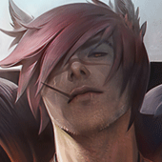
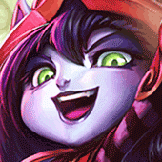
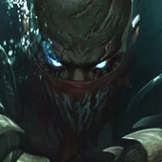
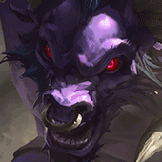
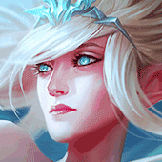
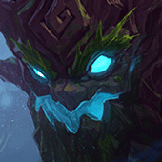
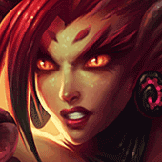

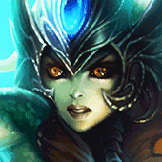
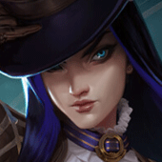
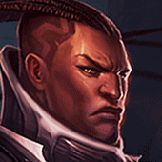
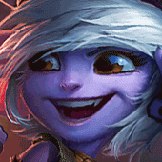
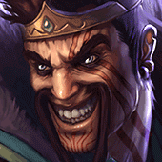
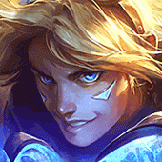









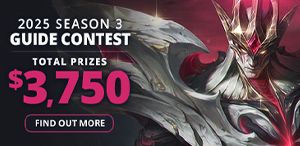

You must be logged in to comment. Please login or register.